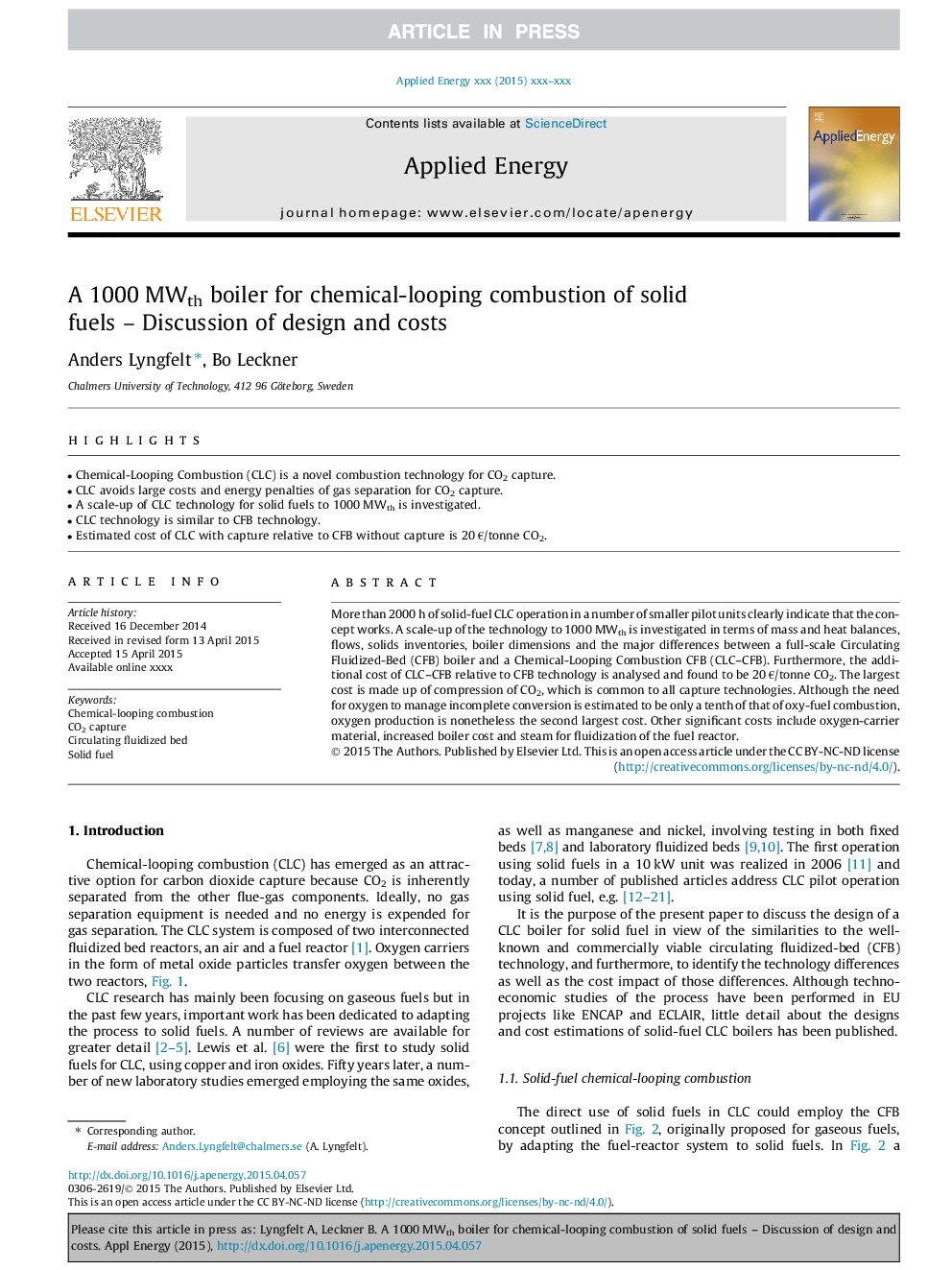| Article ID | Journal | Published Year | Pages | File Type |
|---|---|---|---|---|
| 6685973 | Applied Energy | 2015 | 13 Pages |
Abstract
More than 2000 h of solid-fuel CLC operation in a number of smaller pilot units clearly indicate that the concept works. A scale-up of the technology to 1000 MWth is investigated in terms of mass and heat balances, flows, solids inventories, boiler dimensions and the major differences between a full-scale Circulating Fluidized-Bed (CFB) boiler and a Chemical-Looping Combustion CFB (CLC-CFB). Furthermore, the additional cost of CLC-CFB relative to CFB technology is analysed and found to be 20 â¬/tonne CO2. The largest cost is made up of compression of CO2, which is common to all capture technologies. Although the need for oxygen to manage incomplete conversion is estimated to be only a tenth of that of oxy-fuel combustion, oxygen production is nonetheless the second largest cost. Other significant costs include oxygen-carrier material, increased boiler cost and steam for fluidization of the fuel reactor.
Related Topics
Physical Sciences and Engineering
Energy
Energy Engineering and Power Technology
Authors
Anders Lyngfelt, Bo Leckner,
